 December 18, 2014 John E. Ross, KD8IDJ, Editor
| |||||||
Note: This week's editions of The ARRL Letter and ARRL Audio News will be the last for 2014. The ARRL Letter and ARRL Audio News will be on a holiday hiatus until January. The next edition of The ARRL Letter will be January 8, 2015; ARRL Audio News will post to our website the following day. ARRL Headquarters will be closed on Thursday, December 25, Friday, December 26, and Thursday, January 1. We wish everyone a safe and enjoyable holiday season! "Amateur Radio Parity Act" Campaign Will Resume in New Congress Largely as the result of a grassroots campaign, "The Amateur Radio Parity Act of 2014" (H.R. 4969) attracted the support of 69 members of the US House of Representatives in addition to that of its sponsor, Rep Adam Kinzinger (R-IL). While the just-adjourned 113th Congress did "While we are disappointed that the bill did not make it through the process during the session, the effort was extremely energized by the efforts of thousands of ARRL members who participated in our grassroots lobbying effort," Henderson said. "In just 6 short months we gained tremendous traction for the Amateur Radio Parity Act." Henderson explained that sometime after the new Congress is called into session in January, a new "Amateur Radio Parity Act" bill with a new number will be introduced into the US House. "Once this happens, the ARRL will gear up for a fresh effort to push this legislation forward," he added.
In a note to ARRL Section Managers this week, ARRL CEO David Sumner, K1ZZ, thanked Section leaders and Field Organization volunteers on behalf of the ARRL Board of Directors and Headquarters staff for their help in garnering legislative support for H.R. 4969. "We had hoped to gain 30 co-sponsors for the bill and ultimately ended up with 69, plus the sponsor," Sumner noted. "The overwhelming majority of these 70 supporters are returning in January, which gives us a good base on which to grow additional support." Sumner said the objective for 2015 is to continue the momentum, gathering enough support to move the bill through the Energy and Commerce Committee. "We have received expressions of interest from the Senate side and are hoping to have the bill introduced there as well," he added. Henderson said the bill would not have attained its current level of support in the US House without the thousands of letters and phone calls made by ARRL members to their congressional representatives. "The success of this crucial issue relies on the efforts of all radio amateurs and ARRL members," he said. "We know you will step forward in the new year, when we renew our efforts on Capitol Hill." The ARRL H.R. 4969 web page provides additional information. ARRL's Last "Red Badges on the Air Day" is December 31! The last day of 2014 (UTC) will be your final opportunity to rack up those remaining ARRL Centennial QSO Party points -- before you celebrate the arrival of the new year. To help with that goal, the League is sponsoring its final "Red Badges on the Air Day" on Wednesday, December 31. That's when those high-value red ARRL identification badge bearers will be out in force on the bands.
ARRL officers, elected officials such as Director or Section Manager, as well as Headquarters staffers and volunteers, and other members of the ARRL family are expected to be on the air for this event. Contacts with red badge wearers are worth as much as 300 points per contact for working ARRL President Kay Craigie, N3KN. Many of the 200 or so holders of red badges will be on the air on December 31, along with other ARRL appointees, VEs, and members. Maxim Society members are worth 50 points. These events are considered activity days, not contests, and operation is permitted on all bands. Participants can call "CQ ARRL Centennial QSO Party" on phone or "CQ CENT" on CW or digital modes. While the focus is to encourage ARRL red badge holders to hand out Centennial QSO Party points, all activity is welcome, regardless of point value. Many stations will try to keep their contacts short; the minimum exchange is a signal report, and any ARRL office or member abbreviation is optional. ARRL members are worth at least one point in the Centennial QSO Party. Participants get credit for each band/mode contact, regardless of point value. ARRL Centennial QSO Party participants can use the leader board to determine how many points they have accumulated. Participants will need 1000 points to qualify for a first-level certificate, 3000 points for a second-level certificate, 7500 points for a third-level certificate, and 15,000 points for a top-level award certificate. Read more. Boy Scouts Recognize ARRL Amateur Radio Service to Scouting Award The Boy Scouts of America's National Awards and Recognition Committee has officially recognized the ARRL "Amateur Radio Service to Scouting Award" as part of its family of Community Organization awards. The ARRL award recognizes actively involved Scouting "This is yet another step in ARRL-BSA cooperation, one that will recognize the Scouting leaders who have worked tirelessly to introduce the science, technology, fun, and excitement of Amateur Radio to the youth involved in Cub Scouting, Boy Scouting, and Venturing," the Boy Scouts organization said in announcing its formal recognition of the League award. This award was officially established through a resolution adopted by the ARRL Board at its 2013 Annual Meeting. It builds on the long-standing relationship between the BSA and ARRL, which began with the development of the Wireless Merit Badge in 1918 (now called the Radio Merit Badge). This relationship was formally recognized through a 2011 Memorandum of Understanding (view a video of the signing). Nominations for the Amateur Radio Service to Scouting Award are made through the appropriate ARRL Section Manager. Read more. Cross-Borders ARES Exercise Tests Northeast Communication Capabilities Maine ARES® Section Emergency Coordinator (SEC) Phil Duggan, N1EP, wants to expand Amateur Radio's reach during emergencies in the Northeast. To that end, he convened a 40 meter "cross-borders" net on Saturday morning, December 13, on 7262 kHz to test the communication paths for that band and time for operators in Maine, New Hampshire, and the bordering Canadian provinces. The exercise was spurred by Maine Emergency Management Agency Communications Manager Steve Mallory's suggestion that Maine hams should put extra effort into training and exercising with neighboring states and provinces, since disasters do not recognize borders.
"Most signals were easily copied during the net by all," Duggan recounted. "One surprising outcome for some was the fact that a couple of the stations that had the strongest signals were using modest power -- 25 to 40 W -- and their antennas were verticals." Duggan said the exercise expanded upon Maine ARES and New Hampshire ARES Simulated Emergency Tests held earlier this fall, when members of both states' teams supported each other's SETs. "In recent years there have been few such exercises in the region [and] most Maine emergency communication drills have been limited to VHF or 75 meter phone," Duggan said. "As Maine SEC, in addition to voice modes, I am encouraging the use of more Amateur Radio assets in our training activities, including Narrow Band Emergency Messaging System (NBEMS), digital, good old-fashioned CW, and working with our neighbors." Duggan plans similar events in the future, most likely on a quarterly basis. He encouraged stations in all six New England states, as well as in the Maritime provinces and Quebec, to join in. Read more. -- Thanks to Maine SEC Phil Duggan, N1EP Pennsylvania and Iowa Will Host Final W1AW Centennial Operations The ARRL Centennial W1AW portable operations taking place throughout 2014 from each of the 50 states are now in Maryland, Hawaii, and Georgia. They will transition at 0000 UTC on Wednesday, December 24 (the evening of December 23 in US time zones), to Pennsylvania (W1AW/3) and Iowa (W1AW/0). These will be the last W1AW portable activations of the ARRL Centennial Year. During 2014, W1AW has visited all 50 states at least twice, as well as some US territories.
To earn the "Worked all States with W1AW Award," work W1AW operating portable from all 50 states. (Working W1AW or W100AW in Connecticut does not count for Connecticut. Participants must work W1AW/1 in Connecticut.) A W1AW WAS certificate and plaque will be available. An ARRL Centennial QSO Party leader board shows participants how many points they have accumulated in the Centennial QSO Party and in the W1AW WAS operations. Log in using your Logbook of The World (LoTW) user name and password, and your position will appear at the top of the leader boards. Results are updated daily, based on contacts entered into LoTW. ARRL RTTY Roundup is Always a Mid-Contest Season Favorite Dust off those keyboards! The ARRL RTTY Roundup takes place January 3-4, 2015. It's very easy to get on RTTY and other digital modes, and some late-model transceivers even have RTTY and other digital capabilities built right into the radio. Participation in this annual operating event has grown along with the enthusiasm for digital The 2014 ARRL RTTY Roundup runs from 1800 UTC Saturday, January 3 through 2359 UTC Sunday, January 4. Participants may operate 24 of the 30 available hours. US and Canadian stations send a signal report and state/province, while DX stations send a signal report and consecutive serial number, starting with 001. Submit Cabrillo logs via e-mail or by using the web applet. Send paper logs to ARRL RTTY Roundup, 225 Main St, Newington, CT 06111. All logs must be postmarked no later than 2359 UTC Tuesday, February 3, 2015. Contact the ARRL Contest Branch for more information. IARU President Addresses ITU Telecom World '14 in Qatar International Amateur Radio Union (IARU) President Timothy Ellam, VE6SH/G4HUA, highlighted the benefits of Amateur Radio during disasters in remarks at the International Telecommunication Union (ITU) Telecom World '14, December 7-10 in Doha, Qatar.
The 4-day international gathering in Qatar attracted some 3500 participants representing various fields of information and communications technology. Speakers offered examples of how information technology is helping to save lives or mitigating the effects of natural disasters and climate change. Read more.
Through Ellam, the IARU is a founding Advisory Board member of the ITU's Smart Sustainable Development Model (SSDM) initiative. The initiative is aimed at developing an action plan to deploy necessary crucial telecommunication infrastructure to offer prompt assistance in the event of natural disasters. The Advisory Board will guide the IARU's approach to the initiative. The Advisory Board met in Doha, Qatar on December 6, one day before the kickoff of ITU Telecom World 2014. The IARU played a key role in the development of the Board's final report, adopted at the meeting and available soon, in which the Amateur Radio Service features prominently. Read more. Preparations Under Way for January DXpedition to Iran Preparations continue on the part of the Rockall DX Group to make Iran -- #33 on ClubLog's DXCC Most Wanted List -- available through a DXpedition to Kish Island (IOTA AS-166). Look for EP6T beginning on January 16. While the emphasis will be on 160 meters, the DXpedition will operate on all bands, 160 through 10 meters. EP6T plans to remain active until January 26. Organizers say the theme of the expedition will be "friendship and cultural tolerance." "We hope to make a lot of people happy," team member Luc Kerkhofs, ON4IA, said.
Since word first spread of the planned DXpedition, many groups and individuals have offered support, including the Northern California DX Foundation. The organizers say that preparations are "progressing smoothly and according to plan." M0URX will be the QSL manager. The EP6T log will be uploaded to Logbook of The World (LoTW) once the DXpedition has concluded. Read more. Centenarian ARRL Member Says Congressional Gold Medal for CAP Was Overdue A 100-year-old ARRL member from North Carolina was among those honored on December 10 when the Civil Air Patrol (CAP) received a Congressional Gold Medal for its World War II service, and, for Weldon Fields, W4AJT, of Greensboro, the recognition was long overdue.
During the war, Fields volunteered to become a member of a CAP contingent at Base 16, near Manteo, on North Carolina's Outer Banks. CAP pilots were carrying out anti-submarine missions to thwart submarine attacks off the US East Coast, and volunteers like Fields were needed to provide aircraft-to-ground radio communication. According to CAP, Fields, who became a CAP lieutenant colonel, was responsible for maintaining communication from the base to the planes. He also contributed his own Amateur Radio gear to the base, back in an era when equipment was anything but small and lightweight. "I took my radio down there, and lo and behold, the stairs to the second floor [where the radios were located] were about as wide as my radio," Fields recalled. "We got it up there, and it worked okay, but it was kind of a chore." CAP observer planes flew each day from sunrise to sunset, Fields recalled, keeping the radio operators busy modifying and repairing aircraft radios. While his primary work was as a communications officer, Fields also flew some 200 to 300 hours as a mission observer.
"I'm proud to say that from the day we sent the first flight out, there was not another sinking of our boats or any kind of ship," Fields said. Once the German submariners learned of the CAP air patrols, they were afraid to surface. Forty-six founding CAP members were on hand in Washington, DC, for the presentation, representing the more than 200,000 CAP volunteers during World War II. Dayton Hamvention 2015 Award Nominations Due by January 16, 2015 Time is running short to submit nominations for the 2015 Dayton Hamvention® Amateur of the Year, Special Achievement, Technical Excellence, and Club of the Year. Completed nomination forms and supporting documentation are due by January 16. All Amateur Radio operators (and clubs) are eligible. Winners will be recognized at the 2015 Hamvention®, which takes place May 15-17.
Additional detail and a nomination form are available on the Dayton Hamvention® website. Submit nominations via e-mail or mail them to Dayton Hamvention Awards, PO Box 1446, Dayton, OH 45401-1446. Read more. -- Thanks to Dayton Hamvention Contesting Hall of Famer Carl D. Cook, AI6V/P49V, SK Well-known Contester, DXer, and DXpeditioner Carl Cook, AI6V/P49V (ex-WA6JUD), of Las Vegas, Nevada, died December 15. An ARRL Life Member, he was 74. Despite getting a rather late start, Cook went on to enjoy considerable success in Amateur Radio, and even casual DX contesters had P49V in their logs.
On his QRZ.com web page, Cook recounted how he got into Amateur Radio in the 1970s, when he was 38, after installing an HF radio on his boat. He began listening on VHF, discovered VHF/UHF contesting, and got his Technician license. After upgrading to General in 1975, he enjoyed ARRL November Sweepstakes with the Northern California Contest Club, for which he also served a term as president. In time Cook developed into a world-class contester, and his operations from Aruba put Zone 9 into many logbooks. He said the highlight of his years in Amateur Radio was being named to the CQ Contest Hall of Fame in 1997. Cook was on the DXCC Honor Roll and held 5-Band DXCC. Read more. -- Thanks to John Bayne, KK9A/P40A, and QRZ.com Past Northern Florida Section Manager Royal V. Mackey, N4ADI, SK Past ARRL Northern Florida Section Manager Royal V. "Roy" Mackey,
N4ADI, of Winter Park, Florida, died December 5. He was 96 and had not been active as a radio amateur for several years. Mackey served as Northern Florida Section Manager from 1986 until 1990 and as a Northern Florida Assistant Section Manager from 1990 until 1997. Mackey was instrumental in launching the Volunteer Examiner program in Central Florida. He was a member of the Quarter Century Wireless Association (QCWA). "Roy's passing marks another of the Greatest Generation leaving our midst," said Paul Blumhardt, K5RT, a friend who got to know Mackey and his late wife Carolyn when he was a teenager. "Roy touched the lives of many in our Amateur Radio community, and he will be missed." Read more. -- Thanks to Paul Blumhardt, K5RT A Century of Amateur Radio and the ARRL In July 2001, the ARRL petitioned the FCC to allocate 5.250 to 5.400 MHz to Amateur Radio. At its July 2001 meeting, the ARRL Board of Directors endorsed the Logbook of The World (LoTW) concept, and Headquarters staffers began the massive push to make LoTW a reality.
In September 2001, the ARRL presented an Amateur Radio demonstration and tutorial to FCC commissioners and staff members. ARRL President Jim Haynie, W5JBP, headed the ARRL contingent, and the show-and-tell was deemed a great success. Amateur Radio mobilized and provided communication support following the terrorist attacks of September 11, 2001, on the World Trade Center and the Pentagon. The following month, the FCC established a Homeland Security Panel to plan for restoration of communications links following terrorist attacks. In October 2001, a rash of bio-terrorist (anthrax) threats to federal government facilities caused FCC processing of licensing and other matters to be significantly delayed. The FCC announced that all applicants must register for and obtain a 10-digit FCC Registration Number (FRN), in order to do business with the Commission after December 3, 2001. -- Al Brogdon, W1AB In Brief...
ARTSAT2: DESPATCH Satellite is Now FO-81: AMSAT-NA has designated the ARTSAT2: DESPATCH (DEep SPace Amateur Troubadour's CHallenge) satellite as Fuji OSCAR 81 or FO-81. OSCAR Number Administrator Bill Tynan, W3XO, said this week that the spacecraft "appears to have met all of the requirement
New Element 3 (General Class) Question Pool Released: The Question Pool Committee of the National Conference of Volunteer Examiner Coordinators (NCVEC) has released the 2015-2019 Element The K7RA Solar Update Tad Cook, K7RA, in Seattle reports: Solar activity made a strong comeback this week, with the average daily sunspot number for December 11-17 rising 57 points to 145.4 from the previous 7 days. Average daily solar flux was up 28.1 points to 167.7.
Predicted planetary A index is 8, 10, 15, 10, and 8 for December 18-22, 5 on December 23-27, 8 on December 28-30, 10 on December 31 and January 1, then 12, 25, 15, and 10 on January 2-5, 8 on January 6-7, 10 on January 8-9, and 8 on January 10-12. At 0105 UTC on December 18 the Australian Space Forecast Centre issued a geomagnetic warning for an expected CME impact on December 19-20, resulting in increased geomagnetic activity, with unsettled to active geomagnetic conditions on December 19 and active conditions on December 20. This weekly "Solar Update" in The ARRL Letter is a preview of the "Propagation Bulletin" issued each Friday. The latest bulletin and an archive of past propagation bulletins is on the ARRL website. In tomorrow's bulletin look for an updated forecast and reports from readers. Send me your reports and observations. Just Ahead in Radiosport
See the ARRL Contest Calendar for more information. Upcoming ARRL Section, State, and Division Conventions and Events
Find conventions and hamfests in your area.
Subscribe to...
Free of charge to ARRL members...
| |||||||
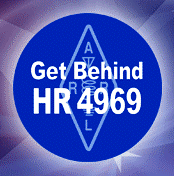 not enact the bill, the effort to gain passage of the legislation will begin anew when the 114th Congress convenes in January. Introduced with bipartisan support last June, H.R. 4969 called on the FCC to apply the "reasonable accommodation" three-part test of the
not enact the bill, the effort to gain passage of the legislation will begin anew when the 114th Congress convenes in January. Introduced with bipartisan support last June, H.R. 4969 called on the FCC to apply the "reasonable accommodation" three-part test of the .jpg)
-2.jpg)
 leaders who make a significant contribution to providing Scouts with a memorable and valuable Amateur Radio experience. This program allows Scouting leaders to wear the Community Organization Award square knot on their uniform, in recognition of their service within their community organization.
leaders who make a significant contribution to providing Scouts with a memorable and valuable Amateur Radio experience. This program allows Scouting leaders to wear the Community Organization Award square knot on their uniform, in recognition of their service within their community organization..jpg) "The exercise brought together Amateur Radio operators from the bordering states and provinces in a collaborative effort that will continue in the coming months, using a variety of bands and modes," Duggan told ARRL. He said the net attracted 33 check-ins from New Brunswick, Nova Scotia, New Hampshire, Massachusetts, Rhode Island, and Vermont. Several state and provincial ARES members and emergency coordinators participated, including New Hampshire SEC Wayne Santos, N1CKM.
"The exercise brought together Amateur Radio operators from the bordering states and provinces in a collaborative effort that will continue in the coming months, using a variety of bands and modes," Duggan told ARRL. He said the net attracted 33 check-ins from New Brunswick, Nova Scotia, New Hampshire, Massachusetts, Rhode Island, and Vermont. Several state and provincial ARES members and emergency coordinators participated, including New Hampshire SEC Wayne Santos, N1CKM.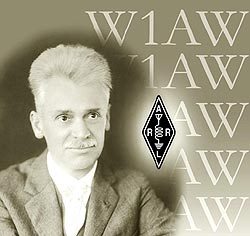 The
The  modes. In addition to conventional Baudot, RTTY Roundup ops may use ASCII, AMTOR, PSK31, and Packet (attended). Newcomers are always welcome to join the fray.
modes. In addition to conventional Baudot, RTTY Roundup ops may use ASCII, AMTOR, PSK31, and Packet (attended). Newcomers are always welcome to join the fray.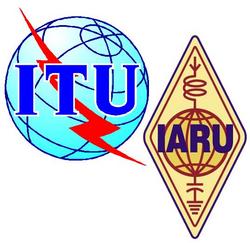 Ellam told the participants that radio amateurs are already in place in 170 countries, that Amateur Radio does not rely on commercial networks, and that hams have the technical know-how to disseminate information during disasters. One example was the response of Amateur Radio volunteers this month during Typhoon Hagupit in The Philippines.
Ellam told the participants that radio amateurs are already in place in 170 countries, that Amateur Radio does not rely on commercial networks, and that hams have the technical know-how to disseminate information during disasters. One example was the response of Amateur Radio volunteers this month during Typhoon Hagupit in The Philippines.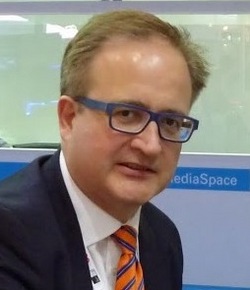
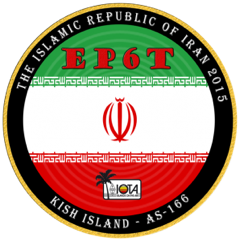 A dedicated 160 meter station will be on the air starting at local sunrise and sunset for the first two nights, in order to work as many Europeans as possible and to check when signals peak to North America. The planned transmitting antenna is a 26-meter (85.3 feet) vertical with 50 quarter-wave radials. Kerkhofs said the operators will attempt to be fair in giving all continents a crack at working Iran on 160. After that, the operators will concentrate on listening for North American stations, although they concede that paths to North America on Top Band will be dicey and of short duration.
A dedicated 160 meter station will be on the air starting at local sunrise and sunset for the first two nights, in order to work as many Europeans as possible and to check when signals peak to North America. The planned transmitting antenna is a 26-meter (85.3 feet) vertical with 50 quarter-wave radials. Kerkhofs said the operators will attempt to be fair in giving all continents a crack at working Iran on 160. After that, the operators will concentrate on listening for North American stations, although they concede that paths to North America on Top Band will be dicey and of short duration.
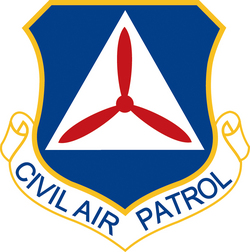 "The wartime communications systems and procedures put in place by Col Fields and his peers laid the foundation for what is now a world-class, nationwide communications system operated by Civil Air Patrol, said CAP Col David Crawford, the North Carolina Wing commander.
"The wartime communications systems and procedures put in place by Col Fields and his peers laid the foundation for what is now a world-class, nationwide communications system operated by Civil Air Patrol, said CAP Col David Crawford, the North Carolina Wing commander. The Amateur of the Year Award goes to an individual who has made a long-term, outstanding commitment to the advancement of Amateur Radio. The Technical Excellence Award is given to an individual who has made an outstanding technical advancement in the field of Amateur Radio. The Special Achievement Award honors someone who has made an outstanding contribution to the advancement of Amateur Radio, typically by spearheading a significant project. The Club of the Year award is presented to a club that has made a significant contribution to the advancement of Amateur Radio.
The Amateur of the Year Award goes to an individual who has made a long-term, outstanding commitment to the advancement of Amateur Radio. The Technical Excellence Award is given to an individual who has made an outstanding technical advancement in the field of Amateur Radio. The Special Achievement Award honors someone who has made an outstanding contribution to the advancement of Amateur Radio, typically by spearheading a significant project. The Club of the Year award is presented to a club that has made a significant contribution to the advancement of Amateur Radio.-th.jpg)
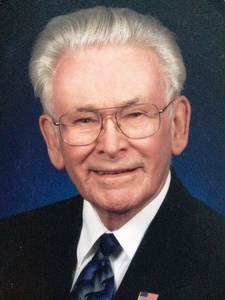
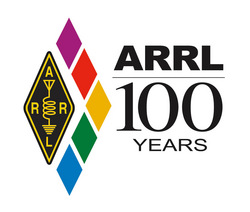
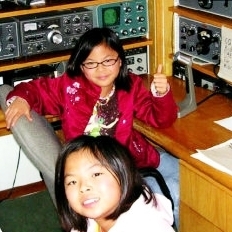 Kids Day is January 4!
Kids Day is January 4!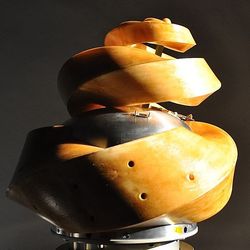 s for an OSCAR number, including IARU coordination." Tynan said the "Fuji" designation recognizes "the long history of contributions the Japanese have made to Amateur Radio satellites." The second spacecraft in the ARTSAT series, FO-81 went into space December 3 with the Hayabusa-2 asteroid probe. A primary mission of DESPATCH is to collect signals from the spacecraft from around the world and to
s for an OSCAR number, including IARU coordination." Tynan said the "Fuji" designation recognizes "the long history of contributions the Japanese have made to Amateur Radio satellites." The second spacecraft in the ARTSAT series, FO-81 went into space December 3 with the Hayabusa-2 asteroid probe. A primary mission of DESPATCH is to collect signals from the spacecraft from around the world and to 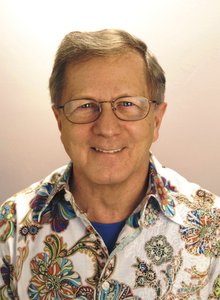
 3 (General Class) question pool. The new question pool becomes effective for all Element 3 examinations administered on or after July 1, 2015, and it remains valid until June 30, 2019. The question pool files are available in
3 (General Class) question pool. The new question pool becomes effective for all Element 3 examinations administered on or after July 1, 2015, and it remains valid until June 30, 2019. The question pool files are available in  The solar flux prediction for the near term is 190 on December 18-19, 185 on December 20-23, then 175, 170, and 145 on December 24-26, 140 on December 27-29, 135 on December 30 through January 1, 140 on January 2-4, 145 on January 5, 155 on January 6-7, 160 on January 8, and 165 on January 9-12.
The solar flux prediction for the near term is 190 on December 18-19, 185 on December 20-23, then 175, 170, and 145 on December 24-26, 140 on December 27-29, 135 on December 30 through January 1, 140 on January 2-4, 145 on January 5, 155 on January 6-7, 160 on January 8, and 165 on January 9-12.







